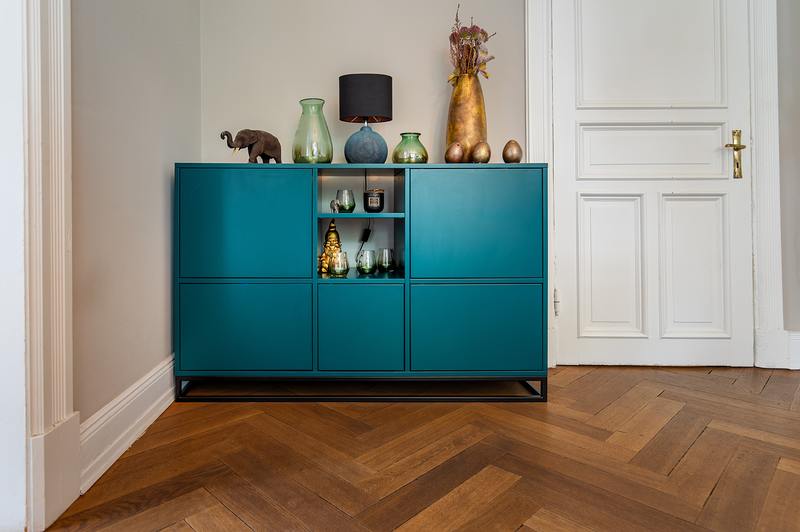Floods and leaks can ruin your day, especially if it reaches your wooden furniture. Knowing how to fix water damaged cupboard may be enough to save you from buying new kitchen equipment. The repairing process only involves emptying the cupboards, allowing them to dry, fixing all the water damage, and then cleaning everything up.
Water can easily damage wooden cabinets and cupboards, especially if they are made from particle boards and other thin wood planks. Thankfully, you can fix this quickly by following four simple steps. Continue reading to learn everything you need to know in repairing your cupboards.

How To Repair Water Stricken Cupboards
Step #1. Empty out the cupboards
The first step in repairing your cabinets is to clear everything out first. By getting the items out of the way, you can work more efficiently and reduce the wood swelling or warping further. Keep the items somewhere safe, preferably in another room.
If the items inside your cupboards are in cans or glass jars, you can most probably still consume them in the future. However, the same cannot be said for items made of cardboard and paper. You should throw away all the food in boxes and all paper materials that you find inside the cabinet.
Step #2. Allowing the wood to dry
When wood absorbs water, it starts to swell, which could cause splits in the board. On the other hand, particle boards on cupboards are often held with glue. Once wet, the bond starts to dissolve, and the cabinet then breaks apart.
This reason highlights the importance of drying your cupboards entirely as quickly as possible. In doing so, you can prevent further water damage and increase your chances of saving the cabinets.
If a leak causes the water damage, you should first call a plumber and let them fix the pipes. If you don’t fix the leak first, all your cleaning and repairing the cupboards will be ineffective. You should consult your insurance provider to see if your policy covers the leak repair.
Using thick towels, blankets, or pieces of cloth, remove as much water as you can from the inside of the cabinets. Wipe the cupboards until they are dry.
If possible, it would be best to remove the cupboard doors to speed up the drying process and reduce the warping of the bottom panel of your cupboard. You should place the doors flat on the ground in another room and dry those using electric fans.
It would help if you used high-volume electric fans and a dehumidifier to remove all the moisture as swiftly as possible for the best results. Check on your cupboards and the cabinet doors every few hours to see if they have completely dried.
Step #3. Doing repairs
Once your cupboard and the doors are completely dry, you can proceed to do repairs. The extent of your repairs depends on how much damage your cupboard sustained. You will need the carpenter’s glue, clamps, 2×4 boards, and screws in repairing your cabinets.
For delaminated parts of your cupboard that split apart, you can apply the carpenter’s glue. Spread the glue in between each layer of your cupboard and cupboard door. Afterward, use clamps to bind it all together until it dries.
You can try screwing 2×4 boards on them to serve as braces while they are still slightly wet for warped and swollen doors. Once the doors dry completely, remove the braces and see if they are no longer warped.
Sometimes, you might need to refinish the cupboards by lightly sanding the edges. After sanding, you should wipe the cupboards to remove all the fine dust and debris.
Afterward, apply a few coats of wood sealers to help protect the cabinets from future water damage. You can also use wood stains to add a layer of protection and improve the look of your cupboards.
Step #4. Finishing up
Once the cabinets and cupboards are completely repaired, you should then focus on cleaning everything else. You can use 6 parts warm water and 1 part oxalic acid for water stains on timber and other wood products. Apply a liberal amount to the wood and brush the stains away.
It would help if you also disinfected the water-damaged area to avoid the buildup of mold and bacteria. If mold has already appeared, you can use water and dishwashing soap to kill it. After disinfecting and cleaning, you should try deodorizing the area in case there are unpleasant smells.
Replacing Cupboards
You can only do so much to save your cupboards. If the cupboards become too warped or split too much, it would be best if you just got new ones.
If you have insurance against floods and leaks, you can ask your policy provider or your lawyer to confirm if the replacement costs are included in your insurance coverage.
Conclusion
Learning how to fix water damaged cupboard can help you save your furniture and keep you from spending too much on new cabinets. All it takes are four simple steps, and your closets will be good as new.
However, your cabinets can only withstand so much damage. If you think your cupboards are beyond repair, it might be cheaper and better to purchase new ones instead.
